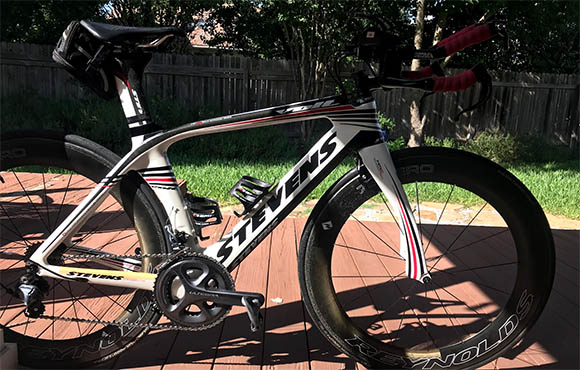
The first time I took my bike in for a tune-up, the mechanic may as well have spoken a different language. Words like "derailleurs" and "cross-chaining" were thrown around. Luckily, the mechanic was kind and walked me through what a tune-up entails and what parts of the bike need to be periodically updated or cleaned. Just like owning a car, you need to know the basic anatomy of your bike, how to maintain it and how to fix it in emergencies.
There can be up to 50 different parts for any bike, but you don't need to know all of them to own one. However, there are three keys areas you do need to know: the frame, the wheels and the groupset.
The Frame
The foundation of any bike is the frame, which connects the entire bike together. A frame is usually made of aluminum or carbon and has seven sections that help support and hold together all the other pieces of a bicycle, such as the wheels and seat. Starting at the front, you have the head tube where the handlebars connect and the forks, which are on either side of the front wheel. The top part of the frame is called the top tube, the tube going down towards the pedals is the down tube and the tube directly under your seat connecting to the pedals is the seat tube (simple enough, right?).
The part of the frame that connects the back wheel has a slightly different nomenclature. The top parts of the frame that connect to the rear wheel are the seatstays (near the seat) and below that are the chainstays (near the chain). The distance between the seat post and crank is the size of the bike. Frames come in several different sizes, ranging from 46 to 64 cm for road bikes. Finding the right size bike is critical to your comfort and form.
The best way to take care of your frame is to clean it regularly and check for any damage every couple of months.
The Wheels
The next parts of the bike you need to be familiar with are the wheels. For road bikes, they come in only one shape but usually two sizes, 650C (for smaller bikes) and 700C (what most riders use) and are made of either carbon or aluminum. The wheel has a hub, rims, spokes and tires. The hub, just like a car, is at the center of the wheel, and the spokes are the thin metal rods extending from the hub to the rim where the tire attaches. Tubeless tires, made of cotton and steel fibers coated with rubber, are mounted on the rim to create a casing for the inner tube.
Some tires are called tubular tires, which are affixed to the bike rim with glue with no inner tube needed.
Before every ride you should check your wheels for tire pressure and rim damage. You will be intimately familiar with your wheels as you learn to change flats. Eventually, you may get a pinch flat, which is when you hit a sharp edge and your bike tire pinches your inner tube against your rim hard enough to perforate the tube and cause a flat. To avoid this type of flat, be sure to inflate your tires to the appropriate tire pressure, which can be found on the inner edge of the tire labeled with PSI (pounds per square inch).
The best way to take care of your wheels is to use the right brake pads for your wheels, keep the rim and brake pads clean and get them trued by a professional as needed. What is wheel truing, you ask? Sometimes your wheel becomes less round and straight due to uneven tension in the spokes. Truing your wheel is tightening or loosening the spokes to align the wheel.


